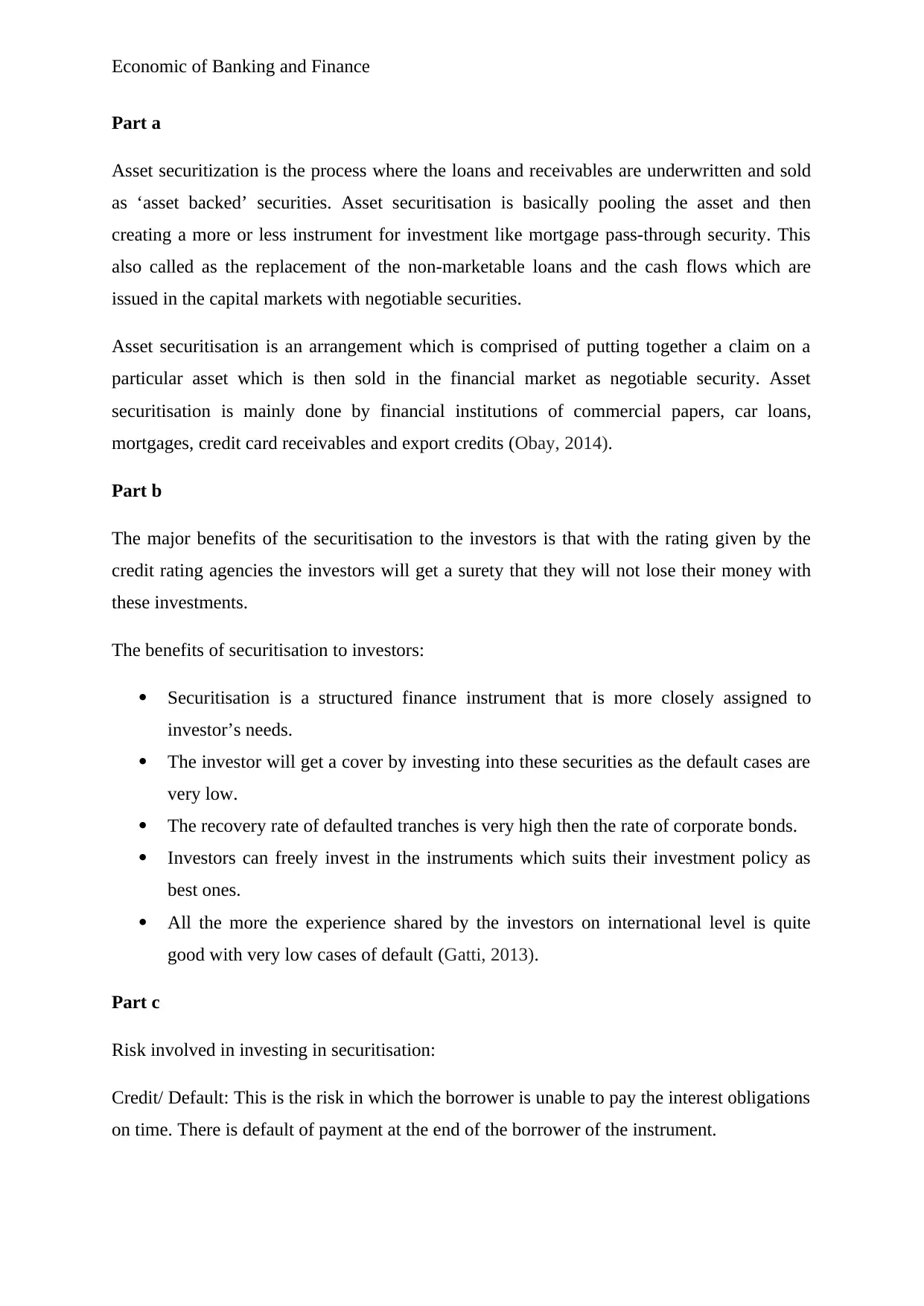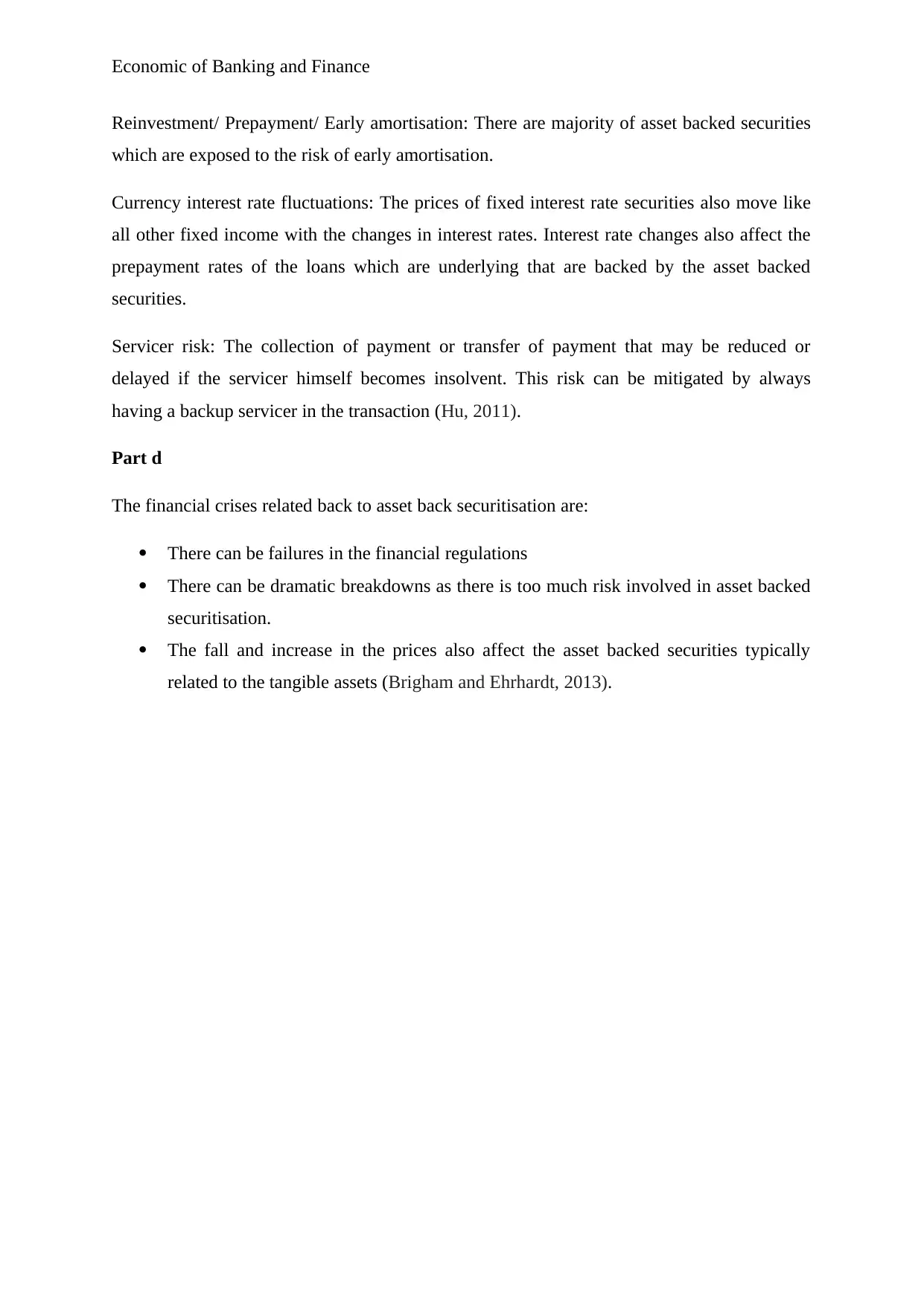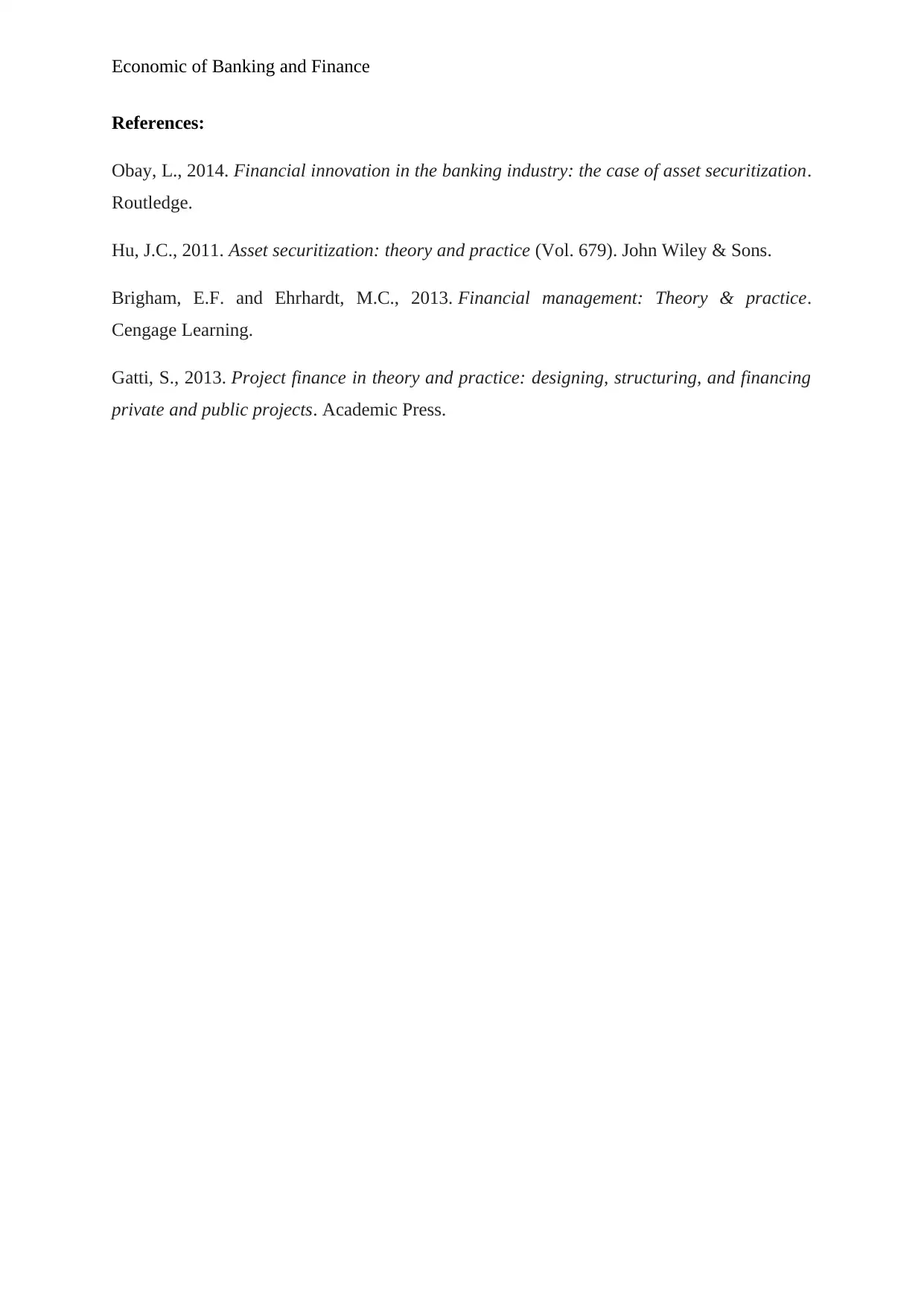Economic of Banking and Finance: Analysis of Asset Securitization
VerifiedAdded on 2023/06/15
|3
|610
|489
Report
AI Summary
This report provides a comprehensive analysis of asset securitization within the context of banking and finance. It begins by defining asset securitization as the process of underwriting and selling loans and receivables as asset-backed securities, essentially transforming non-marketable loans into negotiable securities. The report then details the major benefits of securitization for investors, including risk mitigation through credit ratings, structured finance instruments tailored to investor needs, high recovery rates on defaulted tranches, and investment flexibility. Furthermore, it addresses the risks involved in investing in securitization, such as credit/default risk, reinvestment/prepayment/early amortization risk, currency interest rate fluctuations, and servicer risk. Lastly, the report discusses the financial crises related to asset-backed securitization, highlighting potential failures in financial regulations and the dramatic breakdowns caused by excessive risk. The report references academic sources to support its analysis of asset securitization in the banking and finance industry.
1 out of 3










![[object Object]](/_next/static/media/star-bottom.7253800d.svg)